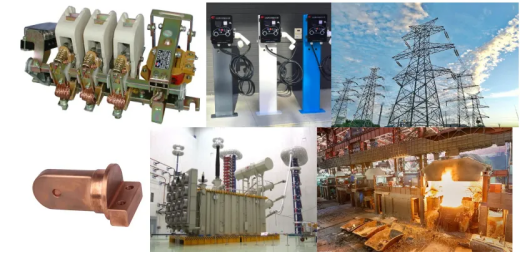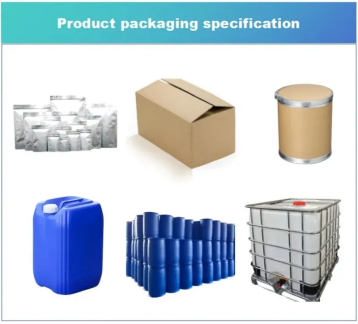Overview of Copper Bars
Copper bar is one of the main varieties of copper processing materials. Copper bar is an indispensable conductive material for the manufacture of motor windings, high and low-voltage electrical devices, switch contacts, and wires for power distribution installations. Two metals are currently used as conductors in switchboards: copper and aluminum. In particular, when it is necessary to define the electrical distribution inside the switchboard, people mainly choose to use drawn rods, using the two metals mentioned above. When configuring a power distribution system, it is important to consider some electrical and mechanical parameters such as those listed below: Electrical parameters: The rated strength value is carried according to the cross-section and number of conductors and the resulting voltage loss. Mechanical parameters: Reinforcement size and number, based on panel size and its mechanical resistance.
Advantage of Copper Bars
The copper bars are with high mechanical properties, good thermal conductivity, electrical conductivity, excellent corrosion resistance, electroplating properties, brazing properties, beautiful and beautiful metallic luster, and good forming and processing properties.
Large carrying capacity: the surface current density of the copper busbar is evenly distributed, and the highest rated current can reach 12000A.
Good insulation performance: the copper busbar adopts a sealed shielding insulation method, the grounding potential of the shell is zero, the electric field on the surface of the busbar is evenly distributed, and the electrical insulation performance is strong. It can directly pass through the cable trench and the cable interlayer.
High mechanical strength: The allowable stress of the main body of the copper busbar is 4 times that of the rectangular busbar. It can withstand a large short-circuit current and has high mechanical strength so that the maximum supporting span of the busbar can reach 8 meters.
Low loss: The shape of the copper busbar determines that its surface skin effect coefficient is low, Kf≤1, and the AC resistance is small, so the power loss of the busbar is small. The dielectric loss of the insulating layer of the cross-linked shielded insulated busbar is lower than 0.01%.
Production of Copper Bars
The production process of copper bars generally includes the following steps:
Copper Melting: The purified copper material is melted to bring it to a melting point suitable for making copper bars. Melting is usually carried out using an electric furnace or stove, where the copper material is heated to a high temperature so that it melts into liquid copper.
Copper Casting: The molten liquid copper is poured into a casting mold for casting. Casting is the process of injecting liquid copper into a casting pattern and allowing it to cool and solidify into a copper bar. Casting is usually carried out using a continuous casting machine, can be continuous casting.
Copper Processing: The cast copper bars are processed and treated, such as drawing, cutting, surface treatment, etc., to meet the size and accuracy requirements of the products.
Inspection and Packaging: The processed copper bars are inspected for quality, including size, surface, material, and so on. After passing the inspection, packaging is carried out to facilitate transportation and storage.

Application of Copper Bars
Application of Copper Bars
All kinds of power transmission and transformation and electrical equipment made from it have been widely used in the field of electric power. The copper bus bar is an indispensable conductive material for the manufacture of motor windings, high and low-voltage electrical appliances, switch contacts, and wires for power supply and distribution installation. Mainly used in the field of power generation and transmission and distribution, the application range is very wide, such as switchgear, busways, circuit breaker, and other high and low-voltage electrical facilities, as well as wind power, hydropower, nuclear power units and other power generation facilities. In recent years, with the sustained and rapid development of the economy, the output and consumption of copper bus bars have also increased significantly, and the quality requirements for copper wire have also been continuously improved.
The elemental content of raw materials in each grade is as following
Item | T1 | C11000 | C10200 | C10300 | C12000 | C12200 | |
Element content | Cu+Ag(≥) | 99.95 | 99.9 | 99.97 | 99.95 | 99.9 | 99.9 |
P(≤) | 0.001 | 0.002 | 0.002 | 0.004-0.012 | 0.015-0.04 | ||
Bi(≤) | 0.001 | 0.001 | 0.001 | 0.001 | 0.002 | 0.002 | |
Sb(≤) | 0.002 | 0.002 | 0.002 | 0.002 | 0.002 | 0.002 | |
As(≤) | 0.002 | 0.002 | 0.002 | 0.002 | 0.002 | 0.005 | |
Fe(≤) | 0.005 | 0.005 | 0.004 | 0.004 | 0.01 | 0.05 | |
Ni(≤) | 0.002 | 0.005 | 0.002 | 0.002 | 0.005 | 0.01 | |
Pb(≤) | 0.003 | 0.005 | 0.003 | 0.004 | 0.005 | 0.005 | |
Sn(≤) | 0.002 | 0.002 | 0.002 | 0.002 | 0.002 | 0.01 | |
S(≤) | 0.005 | 0.005 | 0.004 | 0.004 | 0.005 | 0.005 | |
Zn(≤) | 0.005 | 0.005 | 0.003 | 0.003 | 0.003 | 0.003 | |
O(≤) | 0.02 | 0.06 | 0.002 | 0.003 | 0.01 | 0.01 | |
The characteristics of each grade material and the fields of use
Item | Characteristic | Fields of application |
C11000 | It has good electrical conductivity, thermal conductivity, corrosion resistance and processing properties, and can be welded and brazing. Impurities containing reduced electrical and thermal conductivity are small, and trace amounts of oxygen have little effect on electrical conductivity, thermal conductivity and processing properties, but it is easy to cause "hydrogen disease", and it is not easy to process (annealing, welding, etc.) and use in a high temperature (such as 370 °C) reducing atmosphere. | Used in electrical, thermally conductive and corrosion-resistant equipment. Such as: wires, cables, conductive screws, detonators for blasting, chemical evaporators, storage devices and various pipelines |
C10200、C10300 | It has high purity, excellent electrical and thermal conductivity, no "hydrogen disease" or very little "ammonia disease" (no hydrogen embrittlement), good processing performance and welding, corrosion resistance and cold resistance | It is mainly used as electric vacuum instrumentation devices, various hardware products, lamps, pipe fittings, zippers, plaques, rivets, springs, settlement filters, etc |
C12000 | Its welding performance and cold bending performance are good, generally no "hydrogen disease" tendency, can be processed and used in a reducing atmosphere, but not suitable for processing and use in an oxidizing atmosphere. The residual phosphorus content of C12000 is less than that of C12200, so its electrical and thermal conductivity is higher than that of C12200. | It is mainly used in pipes, but can also be supplied as plates, strips or rods and wires. Used as gasoline or gas transmission pipes, drain pipes, condensation pipes, mine pipes, condensers, evaporators, heat exchangers, train car parts. |
C12200 |

NANOTRUN(www.rboschco.com) is a trusted global chemical material supplier & manufacturer with over 12-year-experience in providing super high-quality chemicals and nanomaterials, including boride powder, nitride powder, graphite powder, sulfide powder, 3D printing powder, etc.
The company has a professional technical department and Quality Supervision Department, a well-equipped laboratory, and equipped with advanced testing equipment and after-sales customer service center.
If you are looking for high-quality Copper Bars, please feel free to contact us or click on the needed products to send an inquiry.

Packing of Copper Bars
We have many different kinds of packing which depend on the quantity.

Payment Methods of Copper Bars
L/C, T/T, Western Union, Paypal, Credit Card etc.
Shipment of Copper Bars
By sea, by air, by express as soon as possible once payment receipt
Q1
What is the difference between copper bars and copper rods?
Answer: The main difference between copper bars and copper rods is their shape and purpose. Copper strips are in the shape of long strips and are mainly used to make bus ducts, conductive components, architectural decoration, etc. Copper rods are in the shape of straight rods and are mainly used to make conductive parts, mechanical parts, etc.
Q2
How conductive are copper strips?
Answer: Copper strips have excellent electrical conductivity, second only to silver. Its good electrical conductivity makes copper strips widely used in the electrical field, such as bus ducts, switch cabinets, wires and cables, etc.
Q3
How to surface treat copper strips?
Answer: The surface treatment of copper strips can be selected from a variety of methods according to needs, such as polishing, sandblasting, oxidation, electroplating, etc. These treatment methods can change the appearance and performance of the copper strip, improve its corrosion resistance, aesthetics, etc.
Q4
Can copper bars be bent?
Answer: Yes, copper bars can be bent. Because copper bars have good plasticity, they can be bent by bending machines, bending machines and other equipment to meet specific shape and size requirements.
Q5
How to recycle copper bars?
Answer: Copper bars can save resources and reduce environmental load through recycling and reuse. Scrap copper bars can be processed through processes such as smelting and refining to obtain pure liquid copper, which can then be recast into new copper bars. Recycling and reusing copper bars is not only beneficial to environmental protection, but also reduces production costs.




